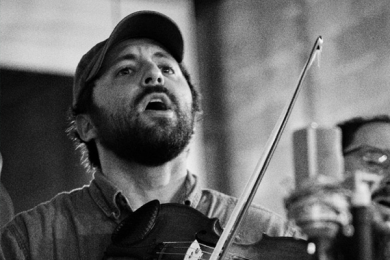On Thanks and Good Giving
News
Thanks, Sage
This week, the Twin Cities lost a major architect of the local arts scene. conservatory in the Walker sculpture garden, a performing arts center, a chair position at the University of Minnesota, a annual award ceremony are all connected to her name. A trained dancer who had studied under Martha Graham and befriended Merce Cunningham, Sage Cowles (Jane Sage Fuller at the time) joined forces with John Cowles (an owner of part of the old Star and Tribune publishing fortune) to become one of the powerhouse philanthropic couples of the region. This was not a mere case of an artist wife dragging her husband along for the ride. John Cowles had already helped to convince Tyrone Guthrie to build his newfangled regional theater in Minneapolis
Sage Cowles was most deeply connected with the dance community, but the list of Cowles' other adventures and achievements is far too long to recount here. Suffice it to say that in this week of Thanksgiving, there may be no single person in the Twin Cities right now for the performing arts community to thank more than her.
To Give and To Be Good
A few months ago, an old couple stopped me on Hennepin Avenue in Minneapolis, asking for directions to the Shubert Theater. After I explained to them that it had been remodeled and renamed the Cowles Center, the old man said, "Well, that's silly. Someone gave them a lot of money, huh?" While he was technically right about the last part of that statement, he encapsulated the attitude that a lot of people have about philanthropists who give to the arts with the first part: that it's a silly, selfish thing meant to glorify the philanthropists.
However, I would rather think of the work of people like the Cowles in the terms laid out in a recent Wall Street Journal article. They were leveraging their fortunes to make the world more beautiful for the mass of people, something that is just as morally right as Bill Gates leveraging his fortune to help cure disease. Of course, it's easy to say that art won't save the world; on the other hand, it's one of the things that makes it worth saving.
In these days of decreased public funding for the arts, large donors are finding themselves being called not just "donors", but "visionaries" and "leaders". Whether this is just flattery to keep the private dollars rolling in, a byproduct of our "everyone's a leader" cultural mindset or just the plain reality of the situation is up for debate. A recent article in the Chicago Tribune delves into this question. Even though the author's conclusion is that all this "leadership through check writing" stuff is overblown, it does lay out some of the problems that arise when the public is no longer asked (or able) to think about art as a public good.
Where Does the Giving Go?
Here's where the noble intentions of big philanthropists funding big projects starts to get messy
Last month, a group of artists and activists posted an open letter to the Walker exhorting the organization to make more room for African Americans to attend a screening of 12 Years A Slave and a discussion with the director, Steve McQueen. The resulting debates became bogged down in the nitty-gritty details of the realities of modern film distribution and the complexities of institutional bias; and, thankfully, McQueen attended another screening not associated with the Walker.
What it comes down to is a question of public access to the arts. The Walker did publicize its showing and discussion and did make its limited tickets available to the public, so from their point of view, they can legitimately say that they made it accessible to the public. However, there's more going on than that. Very large arts organizations like the Walker, the Guthrie and the Ordway ostensibly operate for the public good; but they are largely perceived as "white" institutions, presenting work and doing outreach that is mostly geared toward the middle and upper-class white people who currently buy most of the tickets and donate most of the money. And this operates in a feedback loop, as the modern system of philanthropic giving is largely oriented toward giving to large organizations with a long track record.
This kind of institutional inertia is common in large organizations. A bigger boat is harder to turn around. This is not to say that any donors, board members or directors of these organizations are purposely or consciously racist; but the funding systems they rely on give them no incentive to change or do new outreach. The result is that white art from a euro-centric tradition is considered the safe default position. This inevitably leads to large organizations either failing to realize that they could do more work to attract people of color, or simply making horribly ignorant choices in programming. You may look at these choices and see conscious, institutionalized racism, but it may be that this is simply the inevitable outcome of the current economic model of the arts.
It's an incredibly complex problem that is relevant to all arts scenes, and for your assigned reading this week, I am giving you this recent article from Ian David Moss at createquity. Is "race" a legitimate term, or should we be talking about socioeconomic status instead? Will this all just go away in a generation or two as demographics shift? Why do we even consider white people a monolithic group in the first place? There is a lot to unpack in it, and I am curious as to your reactions.
I seriously doubt that the current state of affairs is anyone's ideal situation (except maybe Joe Dowling; he seems like a pretty happy guy). Ultimately, change at any of our large legacy institutions may come down to the big donors actually acting as the leaders and visionaries they're often called. They are in a unique position today to sway the decisions these institutions make.
Or they could turn their focus to everyone else at the bottom of the food chain. Maybe all these questions of access could be erased if the the small organizations closest to the people who need access actually had the means to offer access?




